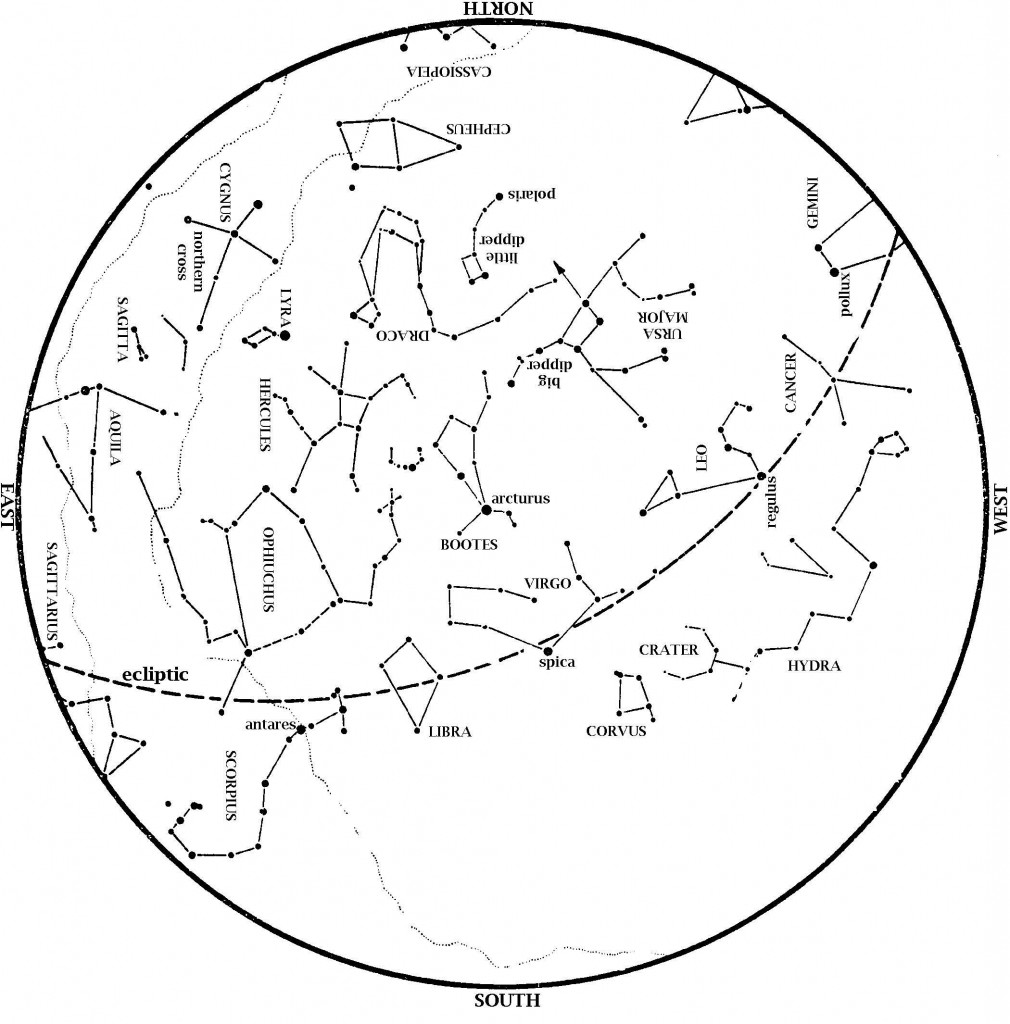Venus is in the west at dusk. At dusk, look high over the point of sunset for the brightest thing there; it outshines everything but the Sun and the Moon.
Jupiter is also in the west as soon as night falls. Jupiter outshines all stars we ever see at night, so it will be obvious when you look up at dusk. During June, watch Venus gradually close the gap on Jupiter, until they are just over one-third of one degree apart on the evening of June 30.
Saturn is now in the southeastern sky at dusk. Although it is not as brilliant as Venus or Jupiter, it outshines the stars around it, so it’s also easy to see.
Mars is lost in the glare of the Sun. Conjunction (Mars in line with Earth and Sun, behind the Sun) is June 14.
The Big Dipper is above the North Star, with its handle pointing up. From that handle, you can ‘arc to Arcturus’ and then ‘speed on to Spica’; those stars are in the south at dusk. Leo, the Lion, is high in the west at dusk. Venus and Jupiter come together right in front of Leo’s face, marked by stars in the shape of a sickle, or a backwards question mark.
Antares, brightest star of Scorpius, the Scorpion, is in the southeast, with the ‘teapot’ of Sagittarius rising behind it. Saturn is right above the scorpion’s head. The Summer Triangle has fully risen in the northeast. The stars of summer are here.
Moon Phases in June 2015:
Full: June 2, 11:19 a.m.
Last Quarter: June 9, 10:42 a.m.
New: June 16, 9:05 a.m.
First Quarter: June 24, 6:03 a.m.
At 11:38 a.m. on Sunday, June 21, the sun is directly overhead at the Tropic of Cancer, the farthest point north where it can be overhead. This puts the Sun as high as possible in our skies, and marks the summer solstice. Of all the days of the year, we’ll have the most daylight and the least night on June 21. In the southern hemisphere, the sun is as low as possible in the sky as they experience the least daylight and the longest night of the year. It’s the winter solstice down there.
Due to the equation of time, the latest sunset occurs for us on June 30, not June 21. Thus, if we sleep through sunrise and watch sunset, as most of us do, days seem to lengthen all the way to the end of the month.
For more information about shows at the Burke Baker Planetarium, visit the planetarium schedule.
On most clear Saturday nights at the George Observatory, you can hear me do live star tours on the observation deck with a green laser pointer. If you’re there, listen for my announcement. I generally do one such tour on short June evenings.
Clear Skies!







